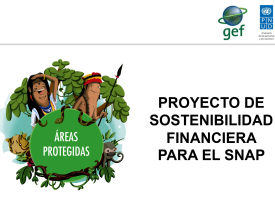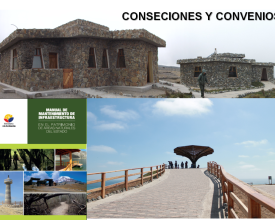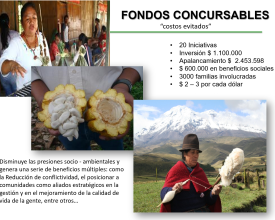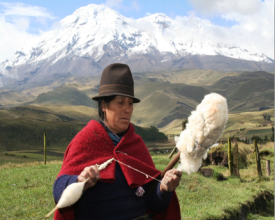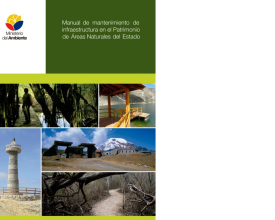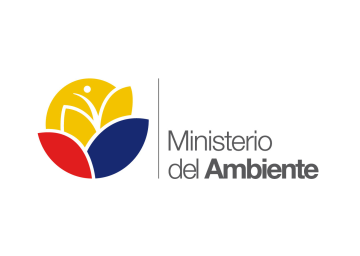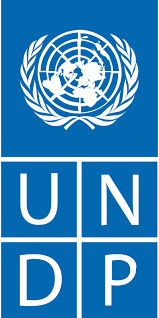
Enhancing SNAP's Financial Health: Strategic Innovations in Ecuador's Protected Areas
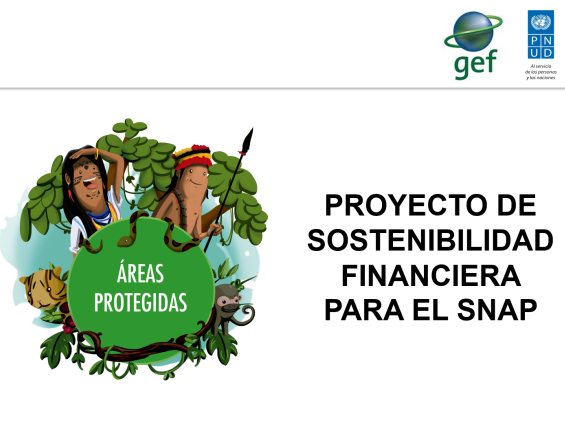
Enhancing Financial Health of the National System of Protected Areas -SNAP (2011- 2016) " initiative, supported by UNDP and GEF in Ecuador, represents a pioneering approach to conservation management. This project strategically integrated economic and environmental planning across key protected areas, including Yasuní, Cuyabeno, Ilinizas, Cayambe Coca, Chimborazo, and Galera San Francisco. By adopting innovative management practices and focusing on optimizing operational efficiency, the project aimed to minimize expenditures and maximize the financial sustainability of these vital ecosystems.
The initiative addressed the challenges of traditional conservation funding models, which often rely heavily on entrance fees and external donor support, by introducing cost-saving technologies and fostering local economic involvement. It enhanced capacity building and infrastructure development to ensure that conservation efforts were both economically viable and ecologically effective.
Contexto
Défis à relever
- Shifting reliance away from entrance fees and fostering a broader base of sustainable revenue sources.
- Integrating cost-effective practices without compromising conservation objectives.
- Strengthening community partnerships to ensure the long-term sustainability of conservation efforts.
Ubicación
Procesar
Resumen del proceso
Efficient infrastructure management, competitive funding mechanisms, and the engagement of volunteers and corporate social responsibility (CSR) synergistically enhance conservation efforts in Ecuador. Robust infrastructure supports the implementation of funded projects, facilitating income-generating activities and improving local conditions. Volunteers and businesses, through their CSR programs, contribute to the maintenance and enhancement of this infrastructure, enriching tourism and environmental education. This collaboration multiplies the impact of each invested dollar and strengthens the sustainability of conservation initiatives, creating a virtuous cycle where proper infrastructure allows for the successful execution of projects that, in turn, benefit from ongoing community support and energy.
Bloques de construcción
Competitive Funding Mechanism for Community Initiatives
The competitive funding mechanism within the SNAP project has been a cornerstone in promoting sustainable community-led initiatives across protected areas in Ecuador. This strategic approach focused on diversifying income sources and transforming local challenges into tangible outcomes. By supporting projects related to ecotourism, restoration, reforestation, sustainable livestock farming, organic gardening, and sustainable fishing, the mechanism has improved the quality of life for local communities while enhancing the conservation of biodiversity.
Factores facilitadores
- Community Engagement: The active participation of local communities in designing and implementing projects ensured that the initiatives were well-aligned with local needs and conservation goals.
- Diverse Funding Sources: Leveraging funds from various donors, including international grants and private sectors, provided the necessary financial support to kickstart and sustain these initiatives.
- Training and Capacity Building: Providing communities with training in project management, sustainable practices, and financial literacy empowered them to successfully manage and expand their projects.
Lección aprendida
- Economic Leverage: For every dollar invested in these community projects, more than double was leveraged through additional funding and in-kind contributions, demonstrating a high return on investment and the economic viability of conservation efforts.
- Problem Transformation: By converting local challenges into opportunities, the projects not only addressed environmental and social issues but also fostered a sense of ownership and responsibility among local stakeholders.
- Network Expansion: The success of the funded projects attracted more partners and fostered a wider network of conservation stewards, expanding the guardianship over protected areas and ensuring long-term sustainability.
Effective Infrastructure Management in Protected Areas
Effective infrastructure management in Ecuador's protected areas has been essential for enhancing functionality and sustainability. This strategic approach has streamlined the alignment of various projects funded by different sources to improve construction, equipment, and maintenance of essential facilities. Key infrastructures such as high mountain shelters and community-managed souvenir shops have been pivotal in promoting sustainable livelihoods and supporting local initiatives.
Factores facilitadores
- Integrated Project Management: Leveraging funding from diverse donors and coordinating these efforts ensured that infrastructure projects were not only well-supported but also aligned with broader conservation goals.
- Community Concessions and Engagement: Facilitating concession agreements with local communities for managing facilities like souvenir shops directly linked economic benefits to conservation efforts, ensuring community buy-in and support.
- Capacity Building and Training: Providing essential training to local communities in managing concessions and maintaining infrastructure was crucial for the successful and sustainable management of these projects.
Lección aprendida
- Infrastructure Maintenance Manual: The development of a comprehensive manual for the maintenance of infrastructure across various climates within SNAP has been a critical tool for standardizing maintenance practices and ensuring durability.
- Management Models for High Mountain Shelters: Implementing tailored management models for high mountain shelters helped in maintaining these crucial facilities, which are vital for both safety and tourism.
- Contract and Concession Definitions: Clearly defining the terms for contracts and concessions facilitated transparent and effective partnerships with local communities and businesses, ensuring that these agreements support long-term sustainability.
- Support Mechanisms for Sustainability: Establishing robust support systems for community-led initiatives has enabled these projects to transition into concession-managed enterprises, enhancing their sustainability and economic viability.
- Legal Framework for Long-Term Concessions: The creation of a solid legal framework for long-term concession agreements with expert firms has been instrumental in strengthening local economies by ensuring that businesses operating within protected areas contribute to conservation and community development.
Volunteer Engagement and Corporate Social Responsibility in Protected Areas
This building block focuses on harnessing the power of volunteerism and corporate social responsibility (CSR) programs to enhance the management of protected areas in Ecuador. By engaging both national and international volunteers and collaborating with tourism companies under CSR initiatives, the project leverages diverse skills and resources to support conservation efforts. These programs ensure the operational sustainability of these areas while providing volunteers with valuable experience and the opportunity to contribute to environmental stewardship in a uniquely beautiful country.
Factores facilitadores
- Strategic Partnerships with Tourism Companies: Establishing collaborations with tourism enterprises that view CSR as integral to their business model helps ensure ongoing support for conservation efforts. These partnerships often result in financial and in-kind contributions to the protected areas.
- Structured Volunteer Programs: Developing well-organized volunteer programs that attract both local and international participants. These programs are designed to match the skills and interests of volunteers with the needs of the protected areas, such as monitoring biodiversity, environmental education, and infrastructure maintenance.
- Promotion and Outreach: Effective marketing of volunteer opportunities and CSR programs to target demographics that are most likely to contribute positively to conservation efforts.
Lección aprendida
- Commercial Alignment with Conservation Goals: Tourism companies benefit commercially from the well-maintained and biologically rich environments that attract tourists. Their involvement in CSR ensures that their business interests align with conservation objectives, creating a symbiotic relationship.
- Skill Development for Volunteers: Volunteers gain significant skills and experiences that enhance their personal and professional growth. The practical experience gained in diverse conservation activities such as species monitoring and environmental education is invaluable.
- Enhanced Conservation Impact: The energy and efforts of volunteers significantly strengthen the management of protected areas. The diverse tasks they perform, from scientific research to public engagement, amplify the overall conservation impact and ensure the sustainability of these initiatives.
- Community and International Engagement: The inclusion of local communities and international participants in volunteer programs fosters a greater understanding of global conservation challenges and encourages a collaborative approach to solving environmental issues.
Impactos
The project strengthened the financial sustainability of Ecuador’s National System of Protected Areas (SNAP) through an integrated strategy combining institutional innovation, community participation, and resource optimization. Efficient infrastructure management models were implemented, including high mountain shelters and community-operated tourist shops, supported by technical maintenance manuals tailored to diverse climatic conditions. Through competitive funding mechanisms, over 20 community-led initiatives were supported—ranging from ecotourism, sustainable cattle ranching, and organic gardens to reforestation and sustainable fisheries—transforming environmental pressures into livelihood opportunities. For every dollar invested, more than twice that amount was leveraged through additional funding and in-kind contributions. National and international volunteers, along with tourism companies engaged in corporate social responsibility, contributed to biodiversity monitoring, environmental education, and infrastructure maintenance, reinforcing the protected areas' management and impact. The synergy of these components delivered measurable and replicable conservation and development outcomes.
Beneficiarios
Protected areas benefited from stronger management and infrastructure; local communities gained livelihoods; volunteers contributed to conservation; tourism companies aligned with CSR; and institutions improved their capacity and coordination.
Marco Global para la Biodiversidad (GBF)
Objetivos de Desarrollo Sostenible
Historia
When María Churuchumbi, a Kichwa woman from the northern Ecuadorian Andes, first heard about the competitive funding mechanism of the SNAP Financial Sustainability Project, she never imagined the impact it would have on her life and her community. Her village, located near Cayambe Coca National Park and community forests, relied primarily on subsistence farming, with limited income and increasing pressure on the natural environment.
Thanks to the project, María and her community received training in sustainable practices and submitted a proposal to develop a community ecotourism initiative that included organic gardens, guided forest walks, and a small souvenir shop featuring handmade and locally produced crafts. With technical and financial support, they were able to improve trails, enhance basic infrastructure, and create job opportunities for young people as local nature guides.
At the same time, national and international volunteers supported biodiversity monitoring and trail maintenance, while a tourism company joined the initiative through a corporate social responsibility program, helping to promote the experience as a unique destination. Today, the community shop provides a steady income, and María has improved her family’s quality of life through her work with traditional products. She now maintains a respectful and collaborative relationship with the protected area managers—something that would have seemed unlikely years ago.
This experience not only improved local livelihoods but also turned the community into an active ally in the protection of the area. As María says, “We used to see the forest as something far away. Now it feeds our children, protects our water, and gives us purpose.

